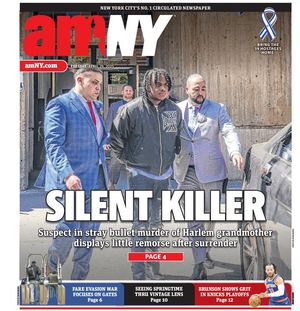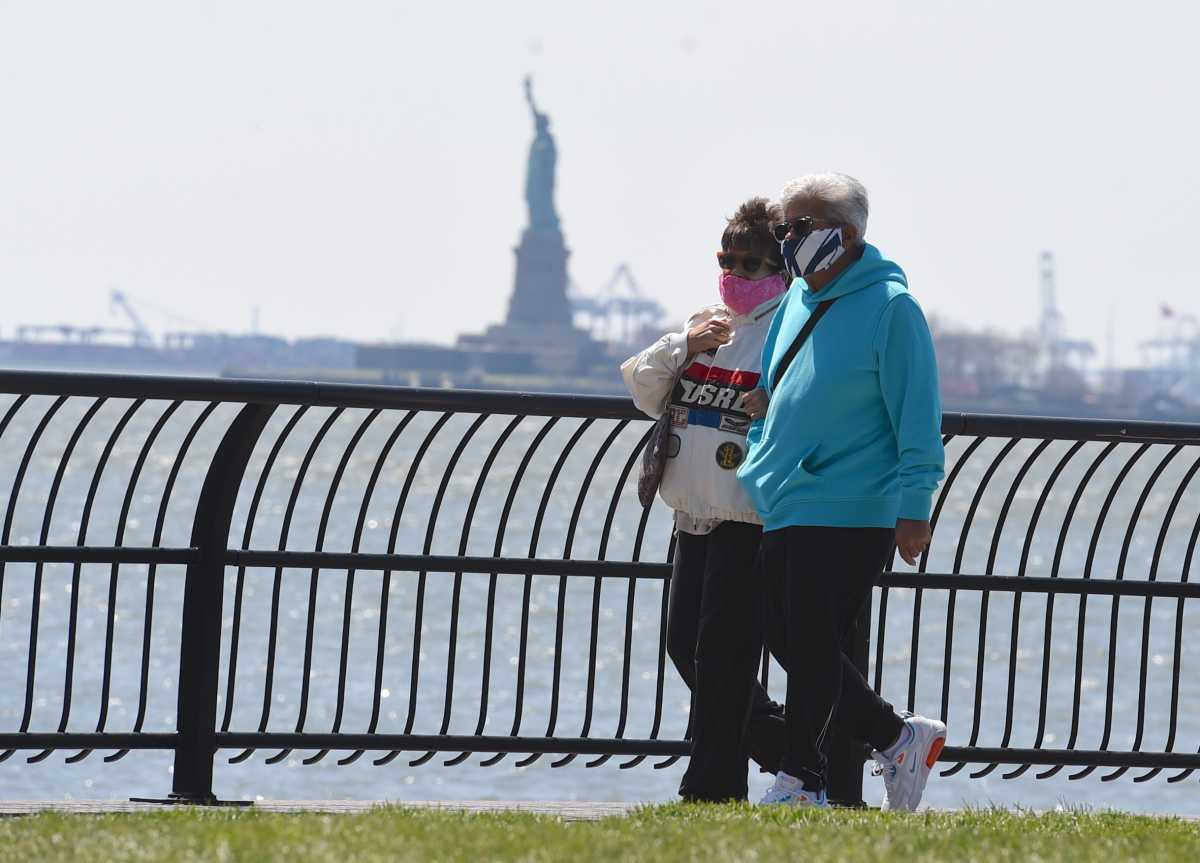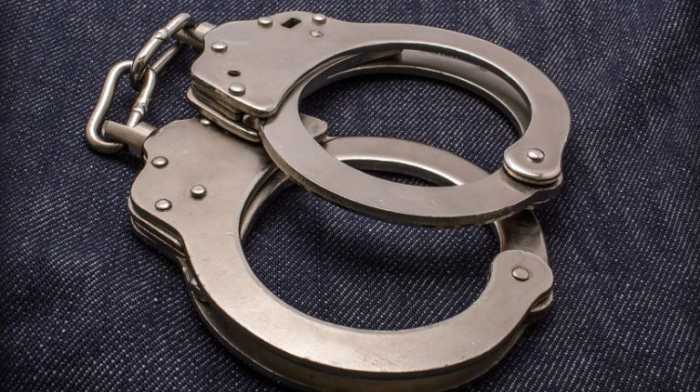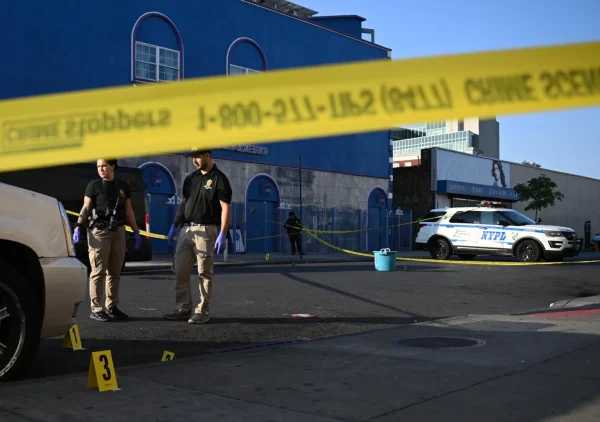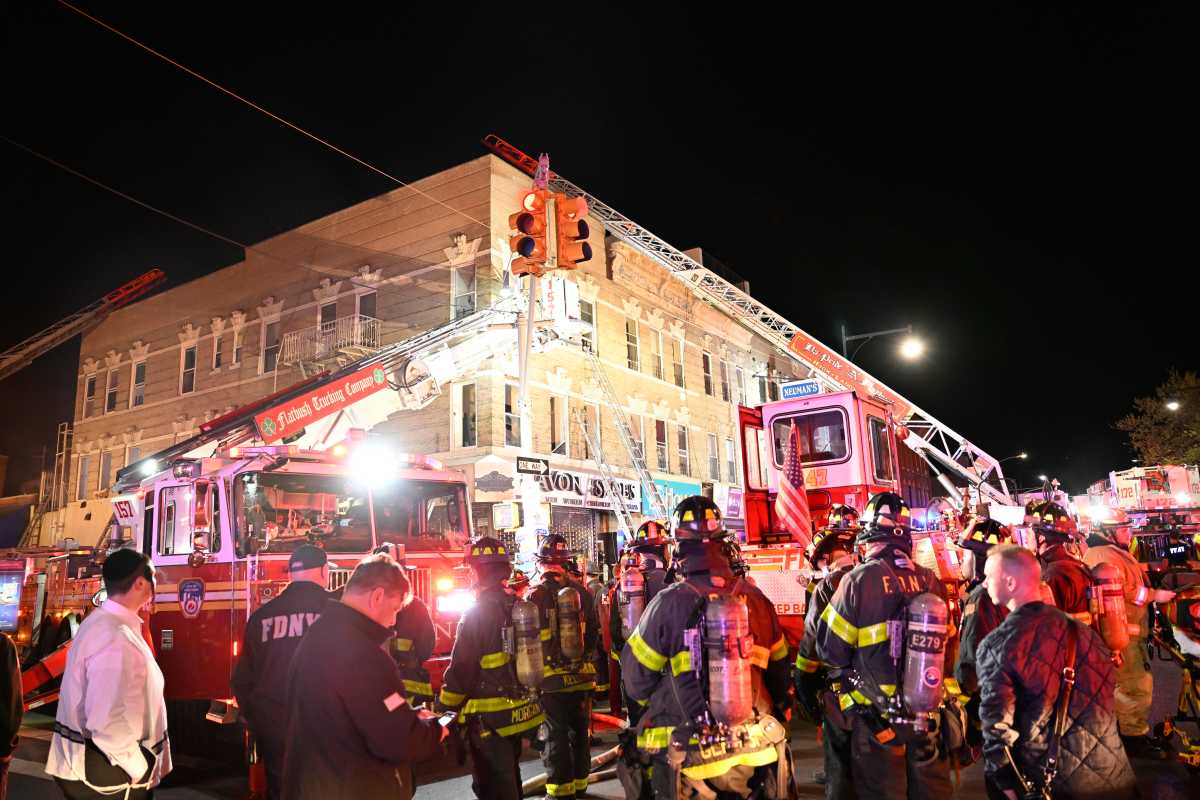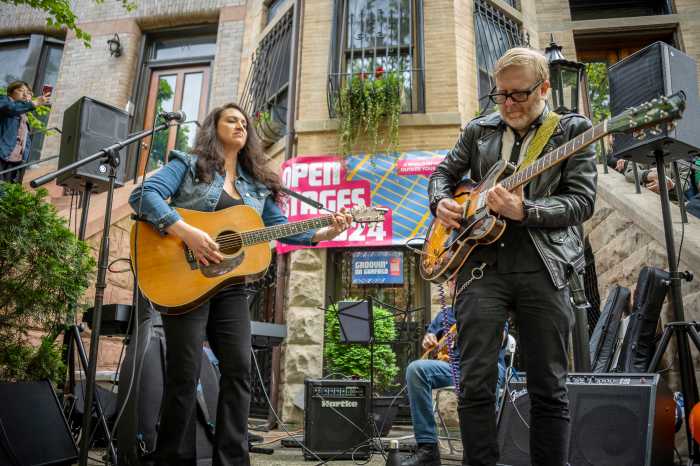Manhattan’s Financial District, the heart of America’s economic capital, had just one reported COVID-19 positive case, the lowest in all of New York City.
Just 3,011 people live in the district’s ZIP code of 10006, and the median household income in the upper middle class neighborhood is $119,274, according to the most recent Census data. The most recent figures from the city’s Health Department noted that only one COVID-19 case was diagnosed in the area between March 31 and April 6.
The second-fewest COVID-19 cases reported in the city during that same period was just to the west of the Financial District, in the northern segment of Battery Park City (ZIP code 10282). The community of 4,783 people, with a median household income of $230,952, had only two confirmed virus cases.
In fact, five of the 10 ZIP codes in New York City with the fewest COVID-19 cases reported between March 31 and April 6 are in Lower Manhattan. The other communities include another area of the Financial District (ZIP code 10004, six cases); Tribeca (10007, 11 cases); and the southern segment of Battery Park City (ZIP code 10280, 11 cases).
Two other Manhattan neighborhoods are in the bottom 10 of COVID-19 cases citywide: Roosevelt Island (ZIP code 10044, six cases) and Lincoln Square (ZIP code 10069, eight cases). Only three areas outside of Manhattan were in the bottom 10: the Hunters Point section of Long Island City, Queens (ZIP code 11109, five cases); Douglaston-Little Neck, Queens (ZIP code 11363, 10 cases) and City Island, Bronx (ZIP code 10464, 12 cases).
The common denominators in all 10 areas? The median household income in each community is far higher than the citywide median of $57,782. Just two of the areas in the top 10 had a median household income below $100,000 (Roosevelt Island, $83,066; City Island, $70,078).
Their populations are also on the smaller scale; of the 10 ZIP codes in the bottom 10, only Roosevelt Island has more than 10,000 residents.
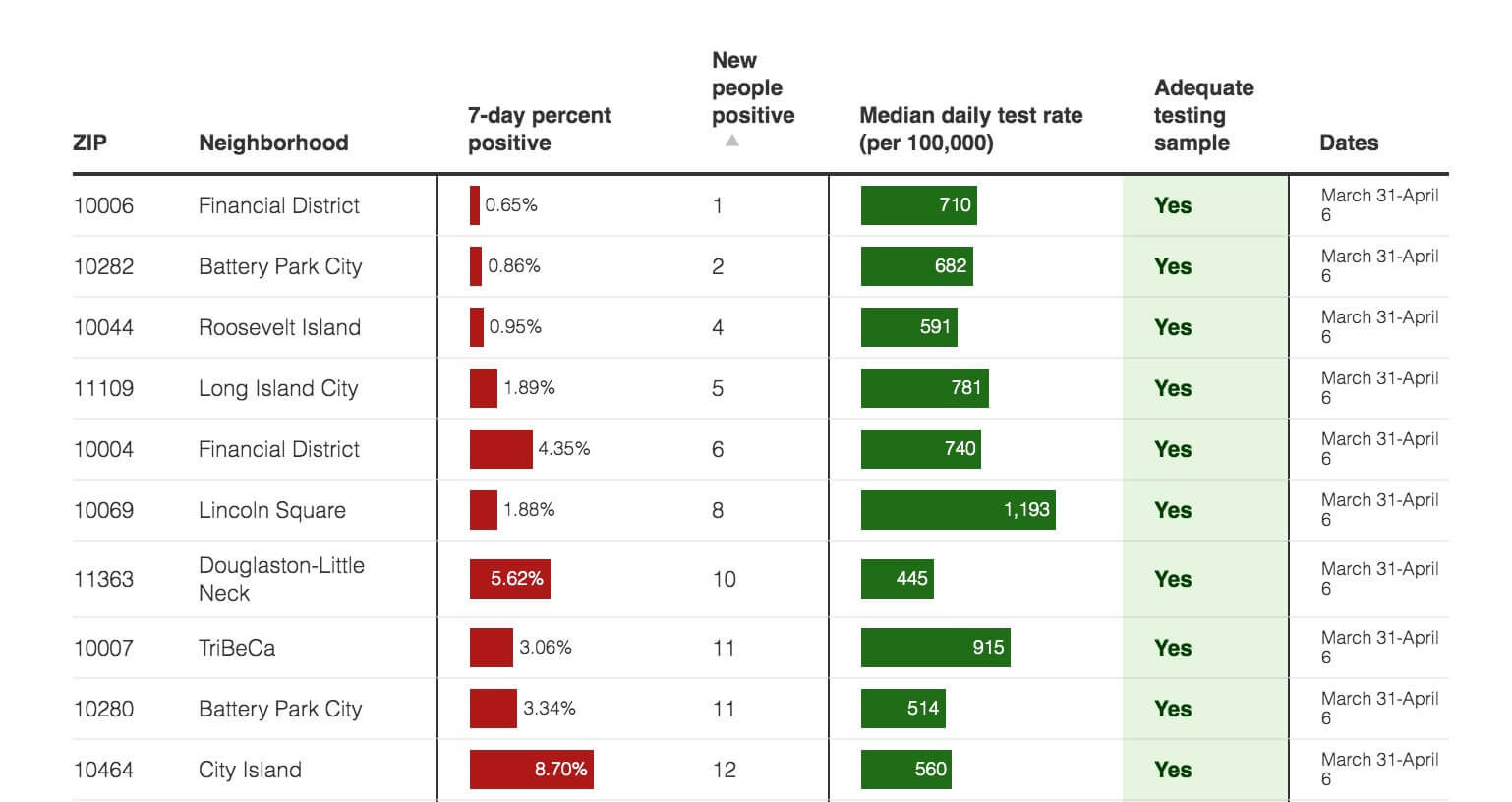
By contrast, Sunset Park, Brooklyn (ZIP code 11220) — which had the most new COVID-19 diagnoses in the city between March 31-April 6, with 336 — has a median household income of $37,580, about $20,000 less than the citywide average. The area also is far more populated by volume, with 99,598 residents — about 33 times the population of the Financial District ZIP code of 10006.
The other neighborhoods in the top 10 in new COVID-19 cases between March 31-April 6 also have much higher populations than their Lower Manhattan counterparts — none of the 10 communities have less than 85,000 residents.
Even so, just two of the areas in the top 10 had median household incomes exceeding the citywide average: the Bloomfield/Fresh Kills Park area of Staten Island (ZIP code 10314, 242 new cases, median household income $77,242), and Canarsie, Brooklyn (ZIP code 11236, 206 cases, median household income $61,061).
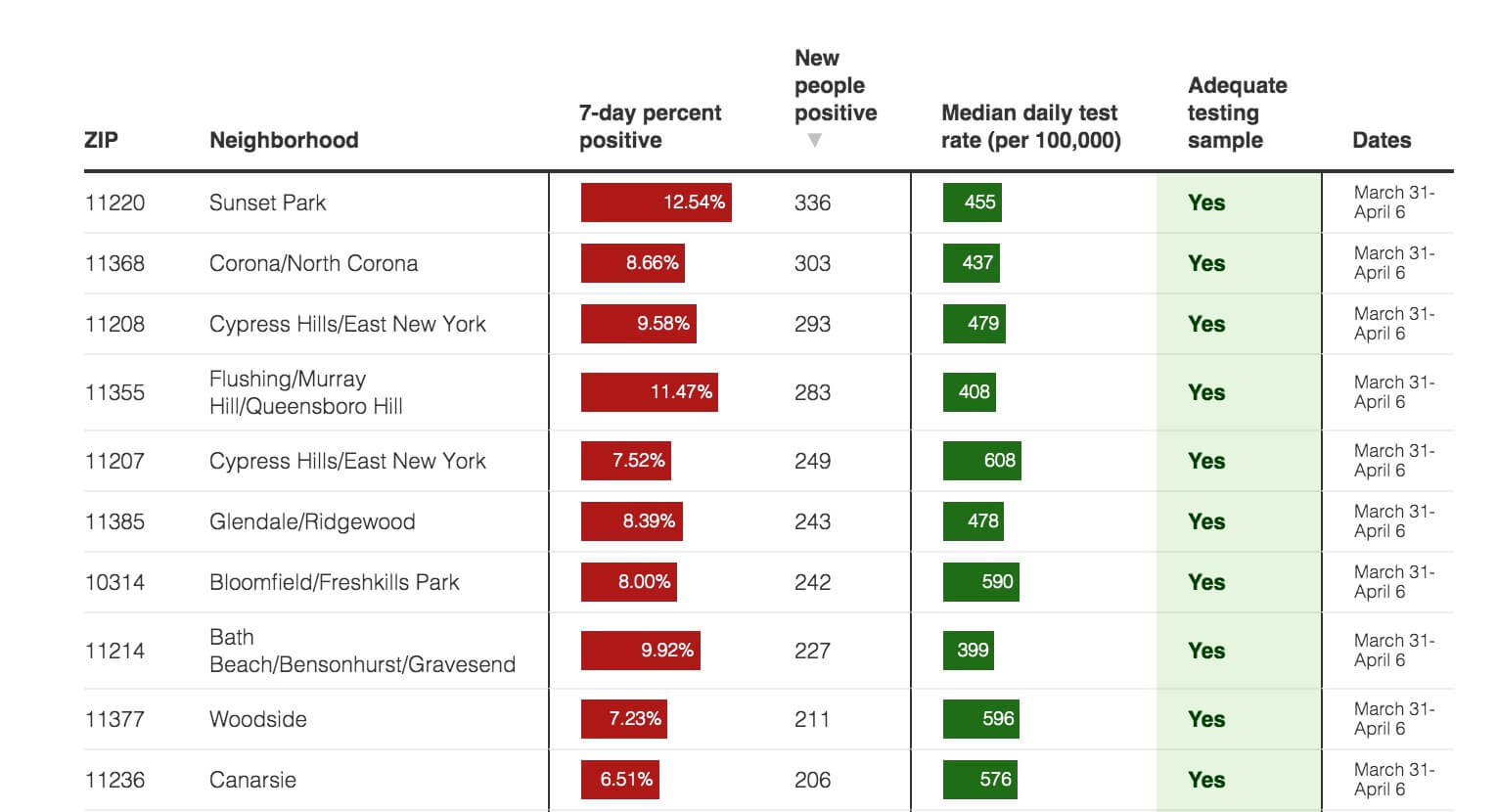
The data seems to underscore a point that many elected officials have made almost from the beginning of the COVID-19 crisis: That the virus itself has had a severe, yet unequal impact upon the city, based largely upon geography, population density, income and race.
As for the 7-day positivity rate, regarded as one of the more effective tools for tracking COVID-19 transmission, 12 ZIP codes in New York City now exceed 10%, with the highest again in the Sunset Park area of Brooklyn (12.36%).
Cases appear to be increasing yet again on Staten Island. Four ZIP codes in the borough exceed the 10% 7-day positivity rate: Tottenville (ZIP code 10307, 12.5% positivity, 61 new cases); Charleston/Prince’s Bay/Woodrow (ZIP code 10309, 10.96%, 141 new cases); Great Kills (ZIP code 10308, 10.34%, 112 new cases); and Elm Park (ZIP code 10352, 10.57%, 71 new cases).
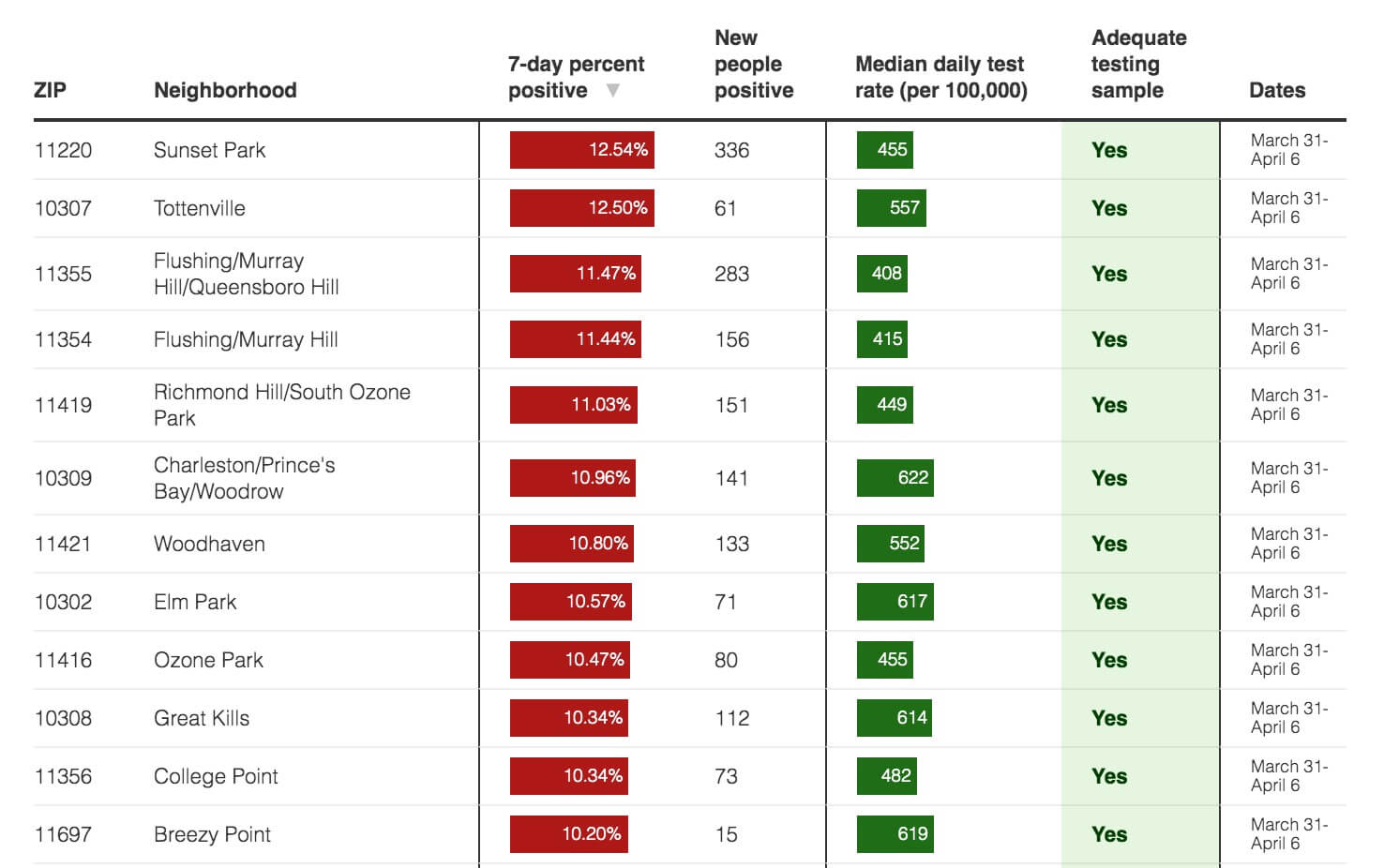
The citywide positivity rate, according to the city Health Department, is 6.67%, which is regarded as stable. All the other major figures are decreasing as the weather warms and the vaccine makes its way into arms; total cases, hospitalizations and deaths are all down, the agency noted.
Yet over the last week, 285 New York City residents died from COVID-19 — a stark reminder that the danger is far from over, regardless of where you live.
